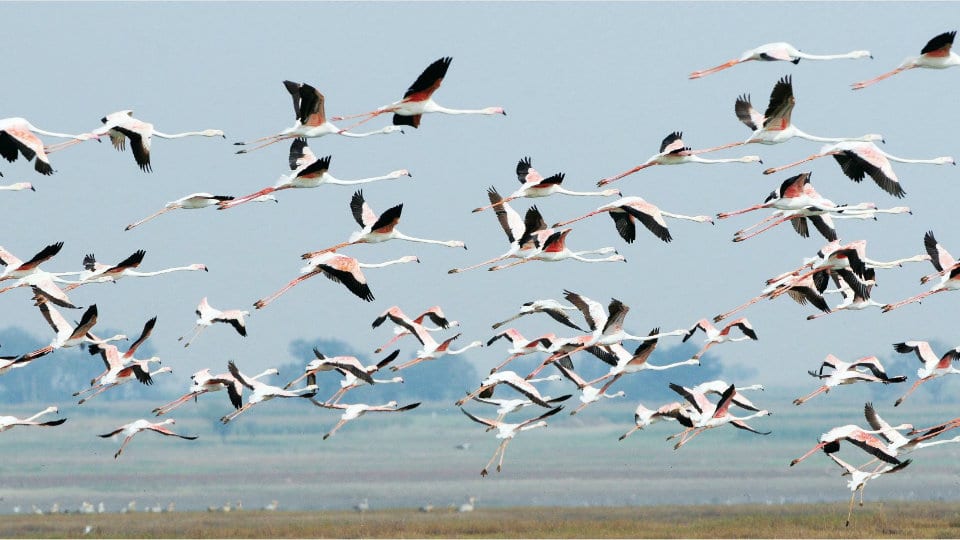By Maneka Gandhi
In this week’s Pet Talk, Maneka explains the ecological importance of crickets, best way to treat dog’s paw pad injury and about need for birds to migrate.
What is the importance of crickets ecologically?
The field cricket (Gryllus pennsylvanicus) is found abundantly in a great variety of habitats (including fields and lawns, forest edges, mature forests, caves, damp basements, around plumbing, and even in outhouses) and occurs over a wide geographic range all over the world. In natural habitats, G. pennsylvanicus may be found in shallow burrows and also in the matrix of dead or living vegetation above the level of the soil.
Field crickets are important agents in decomposition. They consume large quantities of, often highly resistant, cellulose rich, plant materials and produce faecal pellets that are easily decomposed by bacteria and fungi. Their activity, then, greatly accelerates the energy and nutrient flows in an ecosystem and provides plants with a much more abundant reservoir of highly available, essential growth factors.
Field crickets also consume the seeds of many significant “weed” species, thus reducing the potential of these rapidly growing, invasive plants to dominate both natural and human generated (that is lawns and gardens) ecosystems.
Crabgrass, in particular, is a “weed” whose abundance can be reduced by the feeding activities of the field cricket.
Though, when populations of the field cricket become excessively large, they can cause damage to agricultural crops. They can also do significant damage to clothing, furniture, rugs, and even rubber materials when they invade a house in large numbers.
What is the best way to treat dog’s paw pad injury?
Healthy foot pads are crucial so injuries need prompt attention. If your dog limps, or licks at her pads, take heed. She may have a foot pad that is torn, punctured, or burned.
A torn foot pad doesn’t hold stitches well, so cuts and punctures take longer to heal. Walking on the injured foot often opens up the wound and further delays healing. And, if infection sets in, the dog may end up with more than just foot problems. Since even minor foot pad injuries can be stubborn, it’s a good idea to provide first aid at home and then see your veterinarian.
Clean the wound. Look for debris, or foreign objects such as glass or metal shards, that may be lodged in the pad. If the foreign object is located where you can easily grasp it with tweezers, gently remove it. Swishing the paw in cool water, or spraying the paw with a hose, may help dislodge tiny particles. If the debris is lodged deeply, leave it alone. Digging too deep will only worsen the injury and cause pain. Deep-seated foreign bodies need to be extracted by your veterinarian who can sedate your dog to make the procedure more comfortable. Use mild anti-bacterial soap, or betadine, to disinfect the wound. To control bleeding, apply pressure to the wound with a clean towel. Minor tears will stop bleeding in a matter of minutes, but deeper wounds take longer to stabilize. Also, bleeding may reoccur when the dog walks on the leg. If you cannot stop the bleeding within 10-15 minutes, this is an emergency — take your dog to the emergency veterinary clinic. Contain the wound by applying a bandage. Use gauze pads to cushion the bottom of the foot and absorb blood. The gauze padding will also decrease the pain of walking on the foot. To keep gauze in place, wrap the entire foot in a self-sticking product, such as micropore. It is important to cover the paw from the toes up to and including the ankle (tarsus) or wrist (carpus). Covering the toes will prevent them from swelling, and covering the ankle, or wrist joint, will prevent the bandage from slipping off. Make sure the bandage is not too tight. You should be able to insert 2 fingers between the bandage and the leg.
Change the bandage daily. If your dog chews at the bandage, spray it with an anti-lick product such as bitter apple. Keep the bandage dry by taping a plastic bag over it when she walks on wet grass. Pay close attention during bandage changes. If the toes become swollen or dusky or if you note a foul odour or moist discharge, consult your veterinarian. These signs may indicate compromised circulation, or infection that can result in permanent damage to the foot. If the wound continues to bleed, or gapes open after three days, it’s time for a follow-up visit to your veterinarian who can provide high-powered antibiotics and pain medication that will promote faster healing.
In addition to cuts and punctures, dogs often injure their pads when exposed to extreme temperatures or chemicals. Even though foot pads are tough, they can burn on a scorching sidewalk in the middle of the summer, or on icy surfaces during the winter. If your dog licks at her feet, or limps after a summertime or wintertime stroll, sooth her pads by soaking the foot in room temperature water. If the pads become discoloured, or if the tissue under the pad becomes exposed, contact your veterinarian. Severe burns need to be treated professionally. Burns can also be caused by chemicals. If your dog steps into a caustic substance, hold the foot under running water for several minutes. Then wash the paw in mild soap and rinse thoroughly. Make sure you wear gloves to avoid skin irritation. What burns your dog may burn you, too. Apply antibiotic ointment to the burned foot pad and bandage the paw. Daily bandage changes, and close monitoring of the injury, are important. Report any changes to your veterinarian.
What is the need for birds to migrate?
Birds migrate to move from areas of low, or decreasing resources, to areas of high, or increasing resources. The two primary resources being sought are, food and nesting locations.
Birds that nest in the Northern Hemisphere tend to migrate northward in the spring to take advantage of burgeoning insect populations, budding plants and an abundance of nesting locations. As winter approaches and the availability of insects and other food drops, the birds move south again. Escaping the cold is a motivating factor, but many species, including hummingbirds, can withstand freezing temperatures as long as an adequate supply of food is available.
Can dogs undergo an abortion?
Animal mating happens naturally, and one effort to curb the pet overpopulation is to spay and neuter. There are a few scenarios where pet owners may decide to terminate the pregnancy.
Diagnosis: Many dogs presented for abortions may not even be pregnant. It is important to verify your dog is pregnant before having any treatment administered. Some drugs that induce abortion have side effects that could cause health problems for your pet, and this can be serious if the treatment is unnecessary.
- Was the dog in heat? If the dog was not in heat, there is a reduced chance the dog is pregnant. Vets can test for this with a vaginal smear.
- Was there enough time for it to happen? Mating usually takes 20 to 30 minutes on average. If your dog was gone for only five minutes, the chances of pregnancy are greatly reduced.
iii. Was the dog mated? The vet can check for signs that the dog is pregnant. Options include swab tests for sperm if shortly after the mating was suspected, ultrasounds, checking for foetal heartbeats, or performing a pregnancy test.
Treatment: Various drugs may be used, depending on your dog and the vet’s experience.
- In recent years the uses of estrogen injections and pills have been reduced because of their side effects. Estrogen injections may be done soon after the mating, but its side effects can include bone marrow suppression, anaemia or pyrometra (uterine disease). These health issues can be serious, or even fatal, to your dog.
- Another injection sometimes used is Dexamethasone. This injection is administered by your vet. Side effects include panting, excessive thirst and/or excessive urination.
- Prostaglandin F2 alpha (PGF) is considered a natural hormone your vet might administer. Side effects include panting, trembling, nausea, diarrhoea, vomiting and excessive drooling.
Side effects are possible with any form of treatment. Pain, discomfort and bleeding are possible with any abortion, spontaneous or planned. Monitor your dog closely for side effects, consider pain management options and have a plan in place to manage future pregnancies, or spay your dog.
Be wary of any medication described for ending pregnancies in dogs that are available for purchase. Any treatments are best left to your vet in a clinical setting. Additionally, never give your pet medications made for humans without consulting your vet, they could be lethal.








Recent Comments